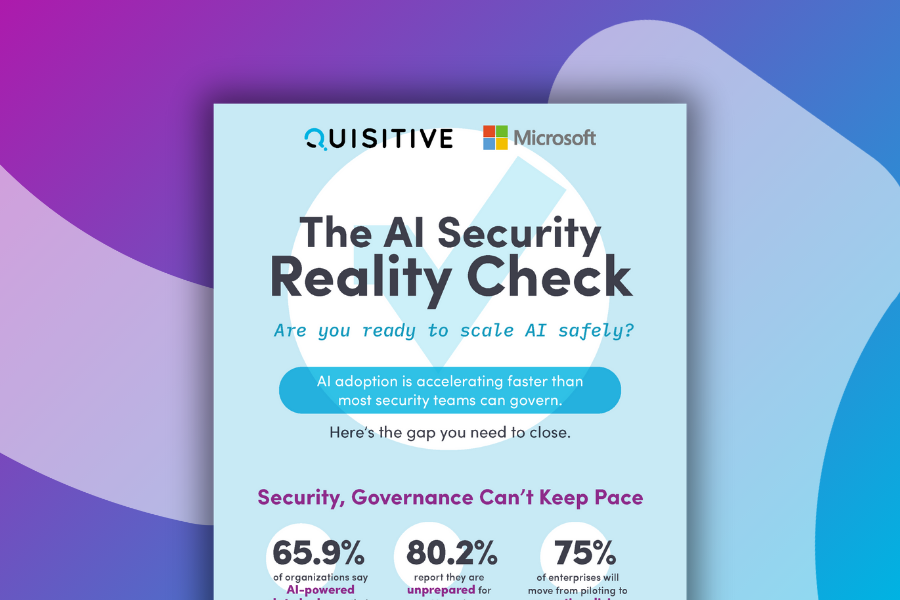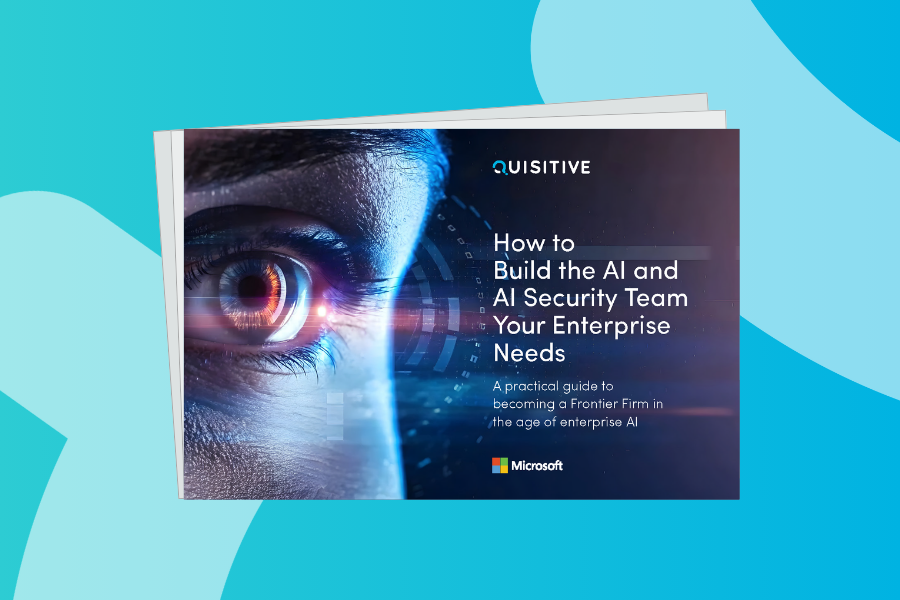Here is a stat that should make every CIO, CISO, and CDO pause: 69.5% of organizations now say AI-powered data leaks are their top security concern, and 80.2% admit they are not ready for AI-focused regulatory compliance. (Source: 2025 AI Risk & Readiness Report, BigID)
AI adoption is accelerating across businesses, but the controls that protect identities, data, and governance have not caught up. At the same time, expectations from the board and executive teams are rising. They want the productivity and innovation benefits of AI, but they also want assurance that expansion will not introduce avoidable risk.
This tension is why many AI rollouts stall after a pilot phase. It is not a lack of interest. It is a lack of confidence in the security foundation due to lapses that could have been avoided by some basic planning and security improvements.
AI Adoption Is Moving Faster Than Governance
Forrester recently highlighted that the race to trusted business value is on and that tech & security leaders must move from experimentation to measurable outcomes. (Forrester Predictions). AI is scaling into core business operations, and the surface area that needs protection is expanding with it.
Where AI Creates New Exposure
AI introduces risk across the Microsoft ecosystem, and it rarely shows up in just one place. The gaps tend to fall into three categories: identity, data, and governance.
1. Identity and Access
AI relies on identities, permissions, and tokens to retrieve and generate information. If identity controls are not strong, AI expands the blast radius. Furthermore, agent identities are moving rapidly towards being fully autonomous.
Common gaps:
- Broad or outdated access permissions
- Presently but evolving quickly: controls (administrative and technical) are newly emerging
- Inconsistent role-based access models
- MFA not applied across high-risk assets
When Copilot can see what a user can see, identity hygiene becomes critical.
2. Data Security and Exposure
AI systems can surface, combine, or generate content that unintentionally exposes regulated or sensitive information. This risk grows when data classification, labeling, and access controls are inconsistent.
Warning signs:
- Sensitive data appearing in prompts or outputs
- Files not labeled or governed correctly
- Data flowing into unapproved plug-ins, apps, or AI learning models…
This is often where pilot rollouts get paused.
3. Governance and Usage Guardrails
AI usage becomes risky fast if policies, monitoring, and responsibility models are unclear. Without structure, shadow AI spreads and teams create their own rules.
Typical issues:
- No AI usage or prompt policy across departments
- Few, if any, data owners to vouch for the data and its potential oversharing
- Lack of visibility into how AI interacts with sensitive systems
- Limited accountability for AI risk ownership
A governance model must be in place before scaling.
Why Do So Many AI Programs Stall After the Pilot?
The pattern is common and predictable:
- A business unit pilots Copilot or an AI tool
- Productivity lifts spark interest in expansion
- Security and compliance review uncovers identity or data gaps
- Rollout is paused for months until issues are fixed
This is avoidable. The problem is not AI. It is the lack of a pre-defined security and governance foundation to support it.
Spyglass gives CISOs the confidence that daily security is under control, so internal teams can focus on higher-value work like automation, AI-driven SecOps, identity strategy, and long-term risk reduction.
Get the infographic
Is your organization really ready to scale AI safely? Understand where the gaps in your security are lurking and how to close them.
A Practical First Step: Build the Security Foundation Before Scaling
Organizations do not need a long transformation program to understand their AI risk profile. They need clarity, evidence, and a plan they can act on.
Quisitive’s Secure AI Quick Start is designed for this exact moment. It gives security, IT, and data leaders a fast and structured way to validate AI readiness, assess risk across identity and data, and establish governance guardrails.
It delivers:
- A prioritized 30, 60, and 90 day security plan
- Visualized alignment with Zero-Trust for that “handful of things” you can do to greatly improve your Copilot and AI Journey’s success. Note, this is not boiling the ocean.
- Clear visibility into identity and data exposure
- A clear and executable path to expand Copilot and AI with confidence
It is completed in under three weeks and aligned to Microsoft best practices, so teams can move from pilot to production without unnecessary delay.
Book your Secure AI Quick Start Now
Until next time,
Ed

;)




